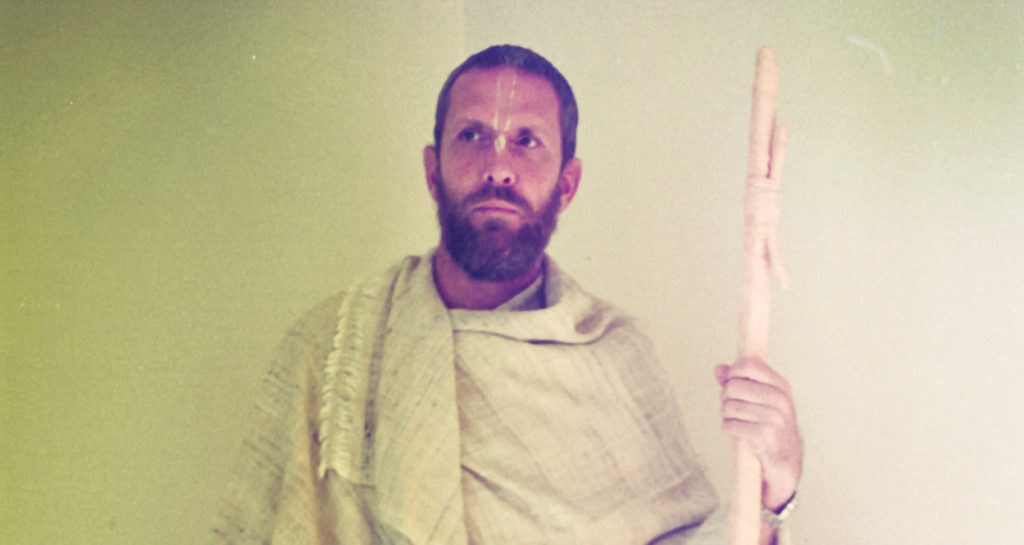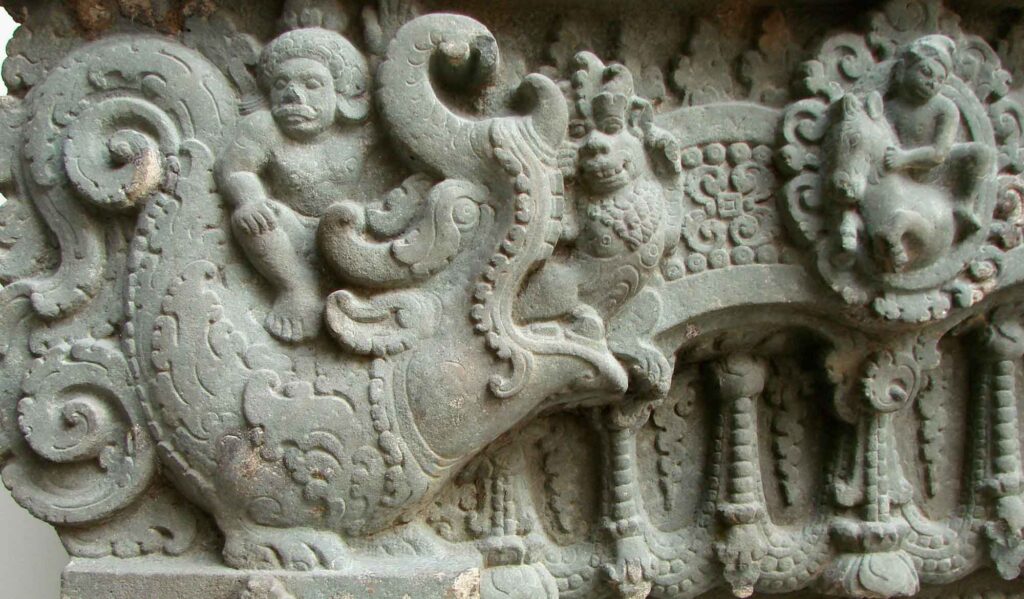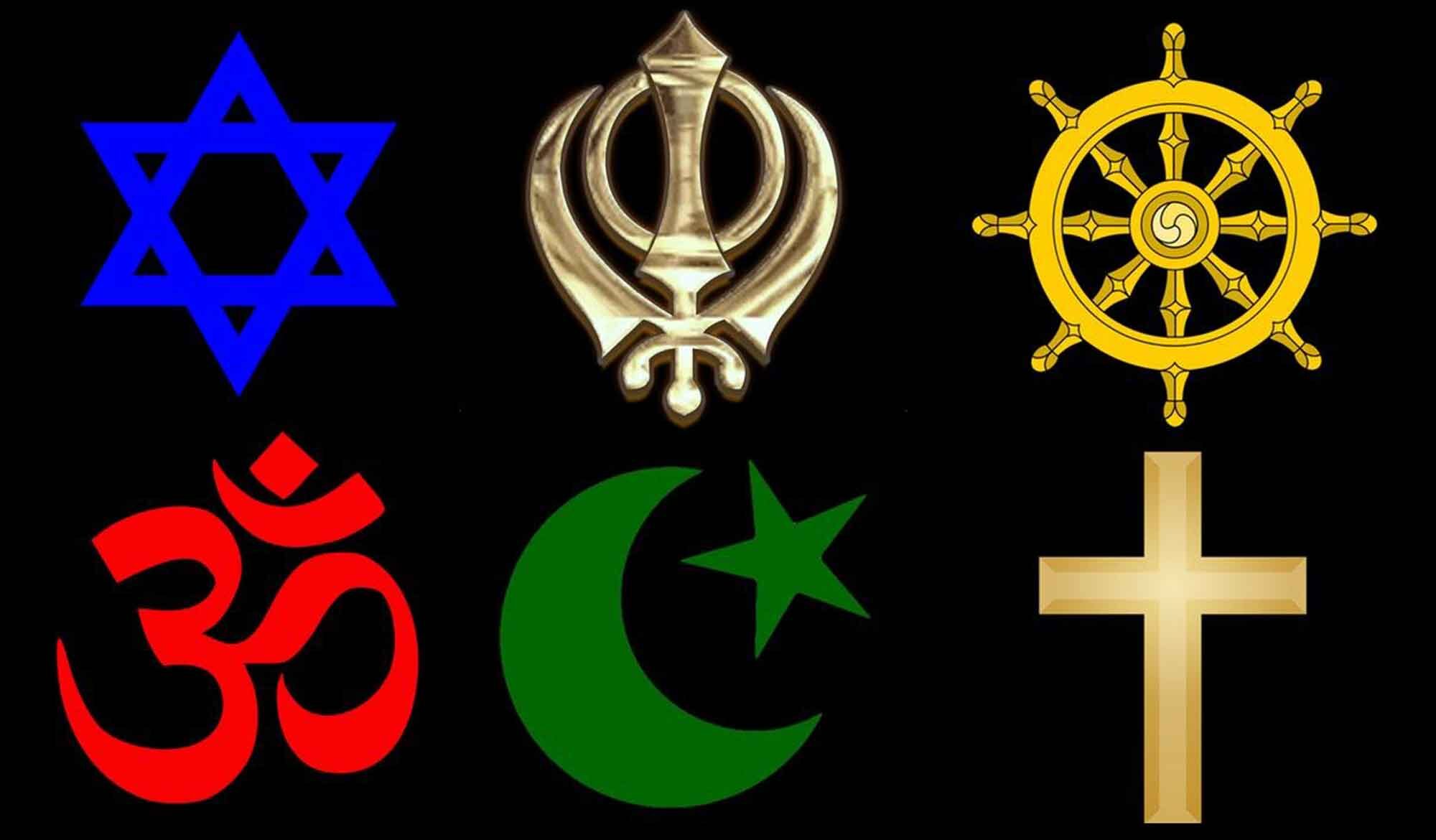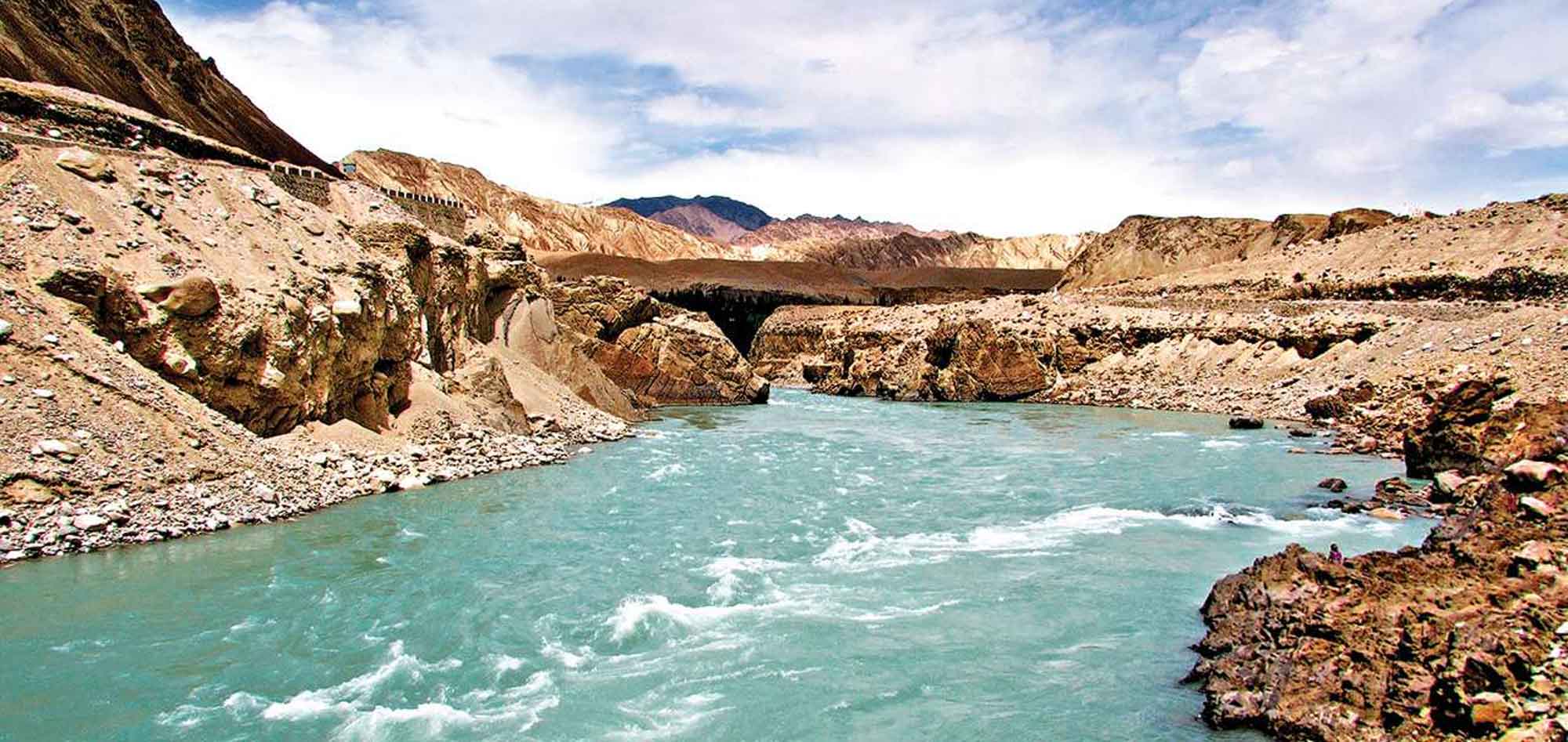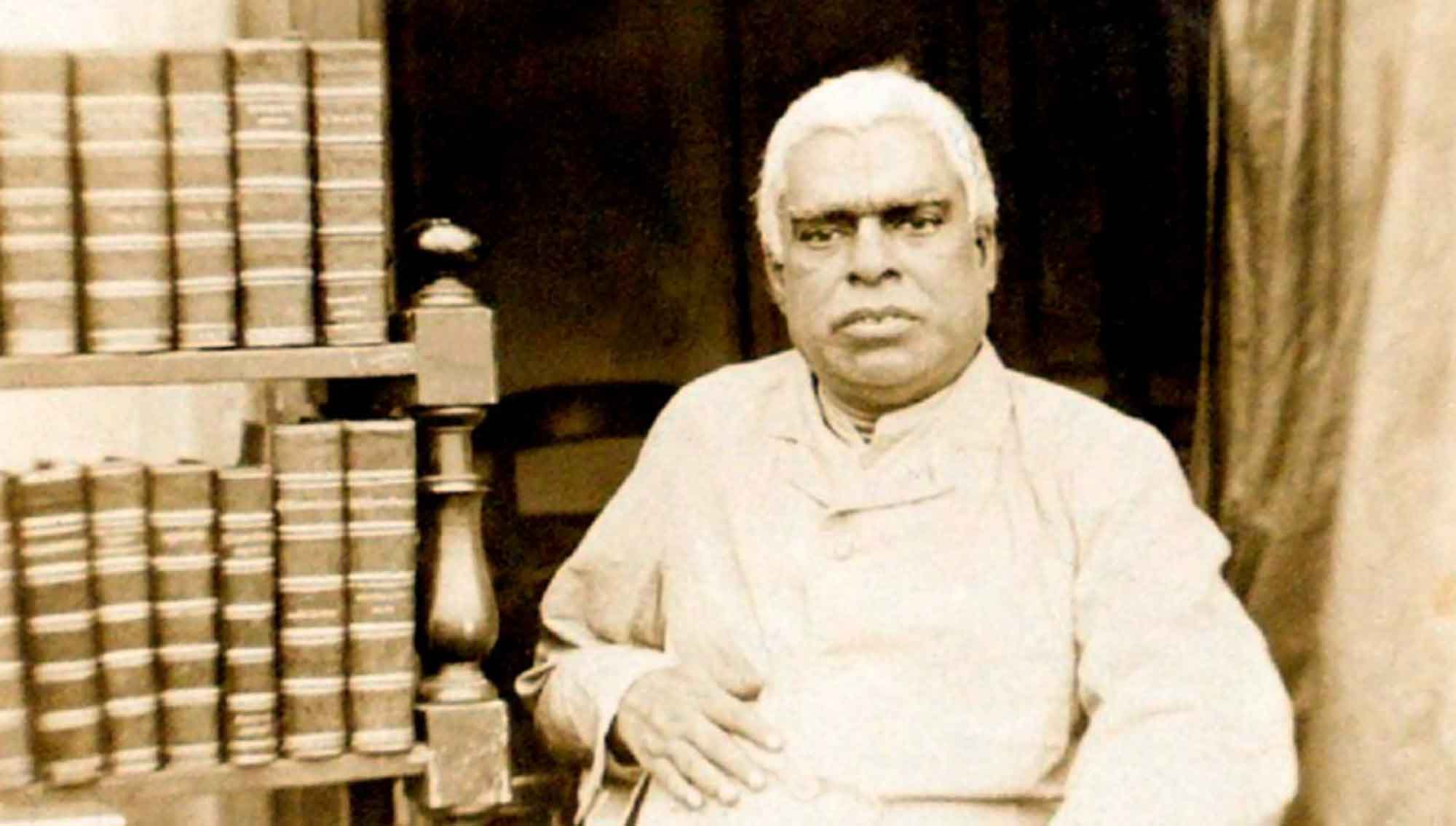by Swami B.G. Narasingha
"Mahāprabhu's mudrā" was written by Swami B.G. Narasingha in the early 1990's. This article explains the reason for Mahāprabhu's descent and also the mudrā (hand gesture) of Śrī Caitanyadeva, that is found sometimes in the forms of Gaura-Gadādhara.
Śrī Kṛṣṇa Caitanya Mahāprabhu appeared in this world with a desire to bestow the supreme benediction upon the conditioned living entities. Śrī Kṛṣṇa in Vraja thought thus:
cira-kāla nāhi kari prema-bhakti dāna
bhakti vinā jagatera nāhi avasthāna
“For a long time I have not bestowed unalloyed loving service to Me upon the inhabitants of the world. Without such loving attachment, the existence of the material world is useless.” (Cc. Ādi 3.14)
sakala jagate more kare vidhi-bhakti
vidhi-bhaktye vraja-bhāva pāite nāhi śakti
“Everywhere in the world people worship Me according to scriptural injunctions (vidhi-bhakti). But simply by following such regulative principles one cannot attain the loving sentiments of the devotees in Vraja-bhūmi.” (Cc. Ādi 3.15)
aiśvarya-jñānete saba jagat miśrita
aiśvarya-śithila-preme nāhi mora prīta
“Knowing My opulence, the whole world looks upon Me with awe and veneration. But devotion made feeble by such reverence does not attract Me.” (Cc. Ādi 3.16)
aiśvarya-jñāne vidhi-bhajana kariyā
vaikuṇṭhake yāya catur-vidha mukti pāñā
“By performing such regulated service in awe and veneration, one may go to Vaikuṇṭha and attain the four kinds of liberation.” (Cc. Ādi 3.17)
yuga-dharma pravartāimu nāma-saṅkīrtana
cāri bhāva-bhakti diyā nācāmu bhūvana
“I shall personally inaugurate the religion of the age – nāma-saṅkīrtana, the congregational chanting of the holy name. I shall make the world dance in ecstasy, realizing the four mellows of loving devotional service.” (Cc. Ādi 3.19)
āpani karimu bhakta-bhāva aṅgīkāre
āpani ācari’ bhakti śikhāimu sabāre
“I shall accept the role of a devotee, and I shall teach devotional service by practicing it Myself.” (Cc. Ādi 3.20)
yuga-dharma-pravartana haya aṁśa haite
āmā vinā anye nāre vraja-prema dite
“My plenary portions can establish the principles of religion for each age. No one but Me, however, can bestow the kind of loving service performed by the residents of Vraja.” (Cc. Ādi 3.26)
Thinking in this way the time for the advent of the yugāvatāra (Nārāyaṇa) arrived and thus Lord Nārāyaṇa entered the body of Śrī Kṛṣṇa as He descended into the world at Nadīyā in the form of Śrī Kṛṣṇa Caitanya Mahāprabhu. In His youth the Lord performed many pastimes by which He flooded the world with the nectar of bhakti–rasa (mellows of pure devotion). In the Lord’s later pastimes He made the whole world fortunate by teaching about the name and fame of Śrī Kṛṣṇa – śrī-kṛṣṇa janaye saba viśva kaila dhanya.
anarpita-carīṁ cirāt karuṇayāvatīrṇaḥ kalau
samarpayitum unnatojjvala-rasāṁ sva-bhakti-śriyam
hariḥ puraṭa-sundara-dyuti-kadamba-sandīpitaḥ
sadā hṛdaya-kandare sphuratu vaḥ śacī-nandanaḥ
“May that Lord, who is known as the son of Śrīmatī Śacī Devī, be transcendentally situated in the innermost core of your heart. Resplendent with the radiance of molten gold, He has descended in the age of Kali by His causeless mercy to bestow what no incarnation has ever offered before – the most elevated mellow of devotional service, the mellow of conjugal love.” (Cc. Ādi 1.4)
When the Lord appeared at Navadvipa He did so in the company of His eternal associates and together they propagated the saṅkīrtana movement. Śrī Caitanya Mahāprabhu only performs His saṅkīrtana movement in the association of His eternal associates and together they bestow the prime benediction on humanity at large.
sva-bhaktebhyaḥ śuddhāṁ nija-bhajana-mudrām upadiśan
“He instructs His own pure devotional service to His own devotees. (Cc.Ādi 3.66)
Upadiśan means instruction and the word mudrā means a specific mark or gesture. Thus the distinguishing characteristic always visible in Śrī Caitanya Mahāprabhu is that He gives instruction to His devotees in the matter of pure devotional service. If one approaches the śrī-mūrti of Śrī Śrī Gaura-Gadādhara one can see the right hand of Śrīman Mahāprabhu in the specific pose (mudrā) of nija–bhajana-mudrām upadisan – instructing the mellows of His own pure devotional service.
In the verse beginning with, anarpita-carīṁ cirāt, the words, unnatojjvala-rasāṁ sva-bhakti-śriyam (bestowing what no incarnation has ever offered before, the most elevated mellow of devotional service, the mellow of conjugal love) are important. Indeed, the mellow of conjugal love (mādhurya–rasa) is the sublime gift which Mahāprabhu descended to bestow. It is certainly the distinguishing characteristic of the Gauḍīya Vaiṣṇava sampradāya in that no other sampradāya offers access into this rasa.
This mādhurya-rasa is the super-excellent rasa (mukhya–rasa) of Vraja because it has as its constituents all the mellow characteristics of śānta, dāsya, sakhya, and vātsalya-rasa within it – therefore the mādhurya-rasa is the most sublime mellow of rendering pure devotional service.
The purpose of Śrī Caitanya Mahāprabhu’s advent (to instruct the most elevated mellow of devotional service, the mellow of conjugal love) has been confirmed by Sārvabhauma Bhaṭṭācārya in the following verse:
vairāgya-vidyā-nija-bhakti-yoga-
śikṣārtham ekaḥ puruṣaḥ purāṇaḥ
śrī-kṛṣṇa-caitanya-śarīra-dhārī
kṛpāmbudhir yas tam ahaṁ prapadye
“Let me take shelter of the Supreme Personality of Godhead, Śrī Kṛṣṇa, who has descended in the form of Śrī Caitanya Mahāprabhu to teach us real knowledge, His devotional service, and detachment from whatever does not foster Kṛṣṇa consciousness. He has descended because He is an ocean of transcendental mercy. Let me surrender unto His lotus feet.” (Cc. Madhya 6.254)
Gaura-premānande hari haribol!
More Articles by Swami B.G. Narasingha
Real Religion is not Man-made
"Real Religion is not Man-made" was written by Swami B.G. Narasingha on September 8th 2006. Narasingha Maharaja discusses the concepts of śraddhā and śaraṇāgati in relation to Vaiṣṇavism and other world religions.
The Sacred River Sindhu/Indus
‘The Sacred River Sindhu/Indus’ was posted by Swami B.G. Narasingha on his blog, narasingha.net, on October 2nd, 2011. In this short article, Narasingha Maharaja explains the significance of the River Sindhu and his pilgrimage to it. This article was later expanded into a bigger article called ‘Sindhu River – How India Got Her Name.’
Scholarship vs Divine Revelation
‘Scholarship vs Divine Revelation’ was first written by Swami B.G. Narasingha in December 2002. In this article Narasingha Maharaja defends the reputation of Śrīla Bhaktivinoda Ṭhākura from a scholar who claims that some of the works of the Ṭhākura are ‘pious forgeries.’

